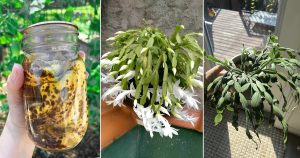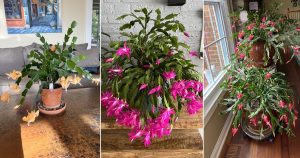Learn how to care for snake plant pups, and get tips on watering, light, and temperature to help your snake plant pups thrive.
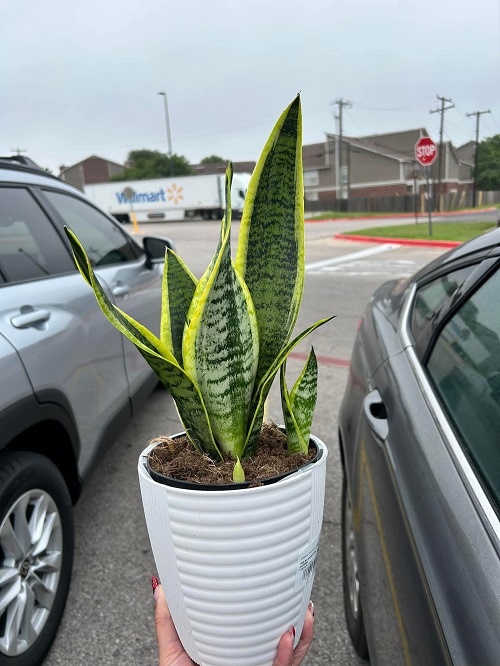
Snake plants, or Sansevieria, are low-maintenance, resilient, and adorable. You will notice that it has small offshoots that grow from the parent plant’s rhizome. With proper care, these baby plants can develop into full, thriving plants that not only bring beauty but also teach you how to nurture life.
Snake Plant Pups
Pups are small offshoots that grow from the underground rhizome or root structure of the main snake plant. They share a connection with the parent plant until they are big enough and have enough roots to be separated, just like us humans. These pups can also be propagated into new plants.
Did you know, snake plant pups are nature’s way of multiplying. The more content and healthy the parent plant is, the more likely it will send out pups—so treat the main plant well, and it’ll reward you with plenty of little ones!
When to Separate the Pups?
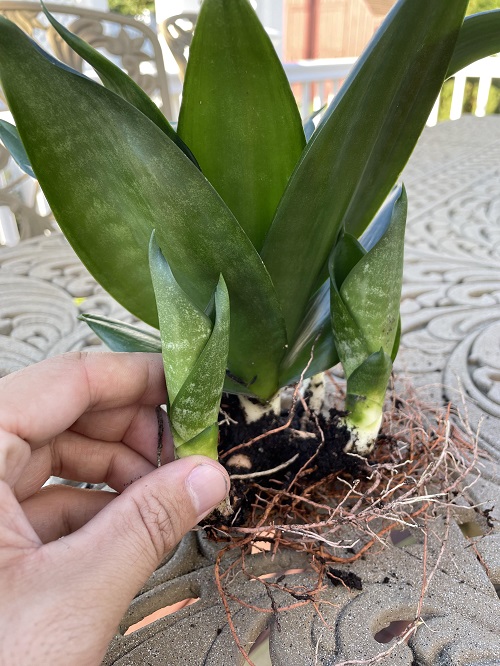
We recommend that you wait until the pup is decently developed. You can understand this by estimating if it is several inches tall and has its own roots. Some people wait until it is 4 to 6 inches tall before separation.
How to Separate the Pups?
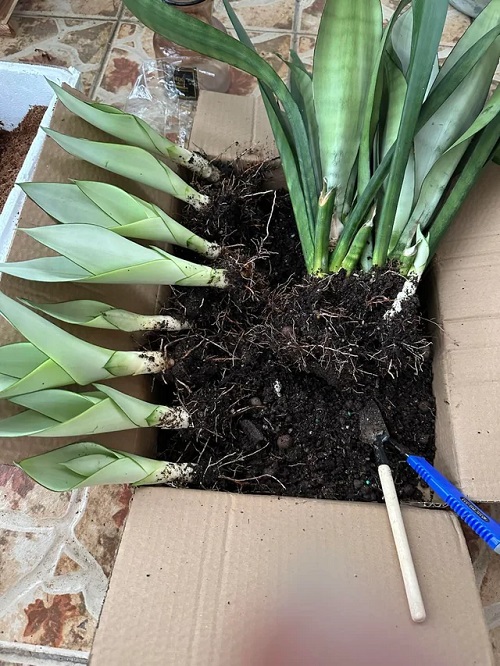
Gently remove the plant from its pot and brush off the soil to expose the roots. Find where the pup connects to the parent rhizome, then use a clean, sharp knife to cut it away. Make sure each pup has a few roots attached.
Let the cut dry for a day or two before planting to prevent rot.
And remember to always sterilize your cutting tool before use to avoid spreading infections between plants.
Taking Care of the Plant
Potting and Soil
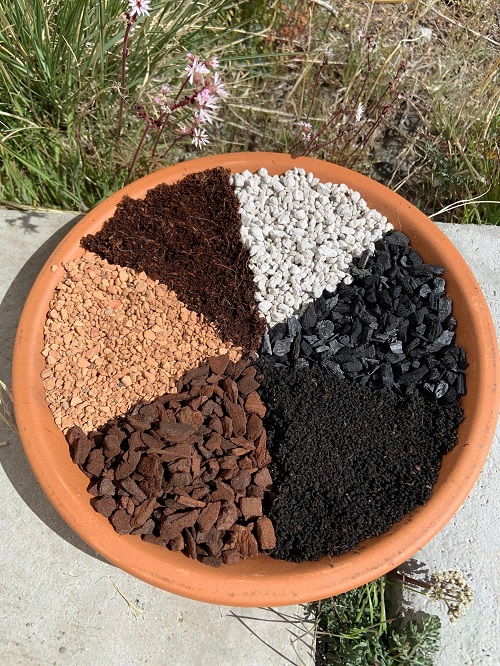
For potting snake plant pups, use a well-draining soil mix like cactus or succulent mix. Choose a pot with drainage holes, probably shallow and wide to accommodate horizontal root growth. Plant the pup at or slightly above soil level, gently packing the soil around it for support to prevent soggy soil and promote healthy growth.
You can mix a bit of perlite or coarse sand into the soil for extra aeration. Snake plants love breathing space around their roots!
Watering and Aftercare
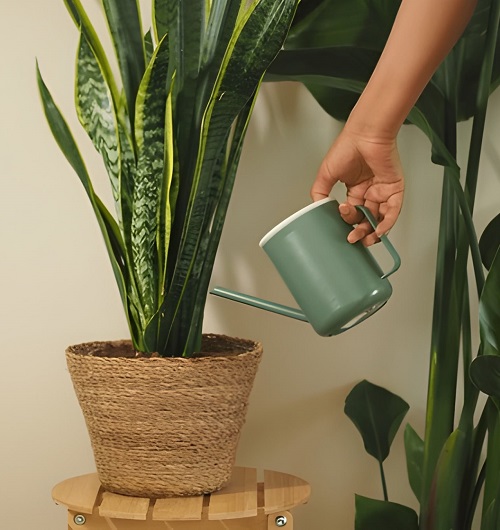
Water lightly right after potting to moisten the soil, then let it dry out completely before watering again. Overwatering is the fastest way to say goodbye to your pup.
For the first few weeks, keep the soil barely moist and place the plant in bright, indirect light. Keep the temperature warm—between 21–32°C (70–90°F)—and away from chilly drafts.
Try not to move your pup around too much during its early days. Like us, plants settle better when they’re not constantly uprooted.
Long-term Care
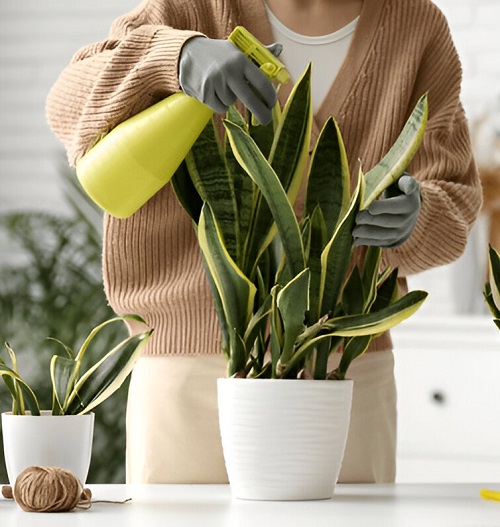
Use a loose soil blend with good drainage; this type ensures they are not easily root-bound. Use minimal balanced fertilizer during the growing season. Provide plenty of indirect sunlight, and don’t forget about the gentle root pruning after a few seasons to encourage new growth.
Common Issues
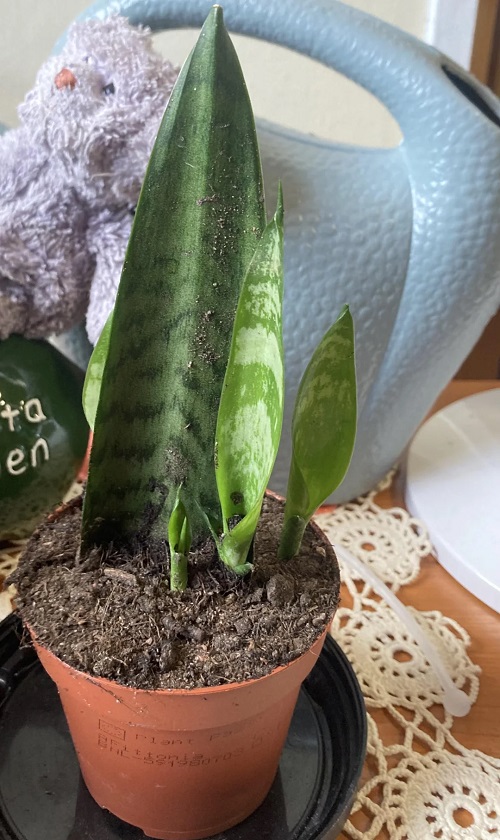
You may find black mushy parts due to overwatering or poor drainage. You can immediately trim away to remove the dead tissues and repot in a fresh pot. Avoid over-watering them or keeping them in too low light.
If you find no new roots or pups, don’t lose patience. Slow and steady always wins the race and which is why some snake plants are slow growers. Try experimenting with water, soil, or light. Sometimes pests like mealybugs can attack the plants, so keep a check on them and treat them accordingly.
Watch Out: If the leaves start curling or becoming wrinkled, that’s a sign of dehydration. A light watering session should perk them right up!
Caring for snake plant pups is a beautiful experience that allows you to multiply your plant collection and learn the soft art of nurturing. With patience and proper care, you’ll soon have a whole family of healthy snake plants to be mesmerized by. Let us know in the comments what your care routine for the snake plant looks like.



